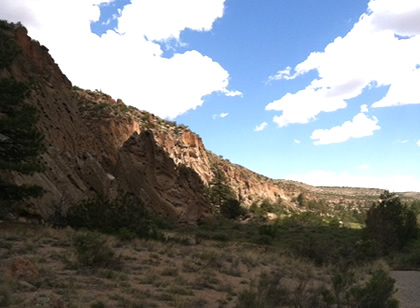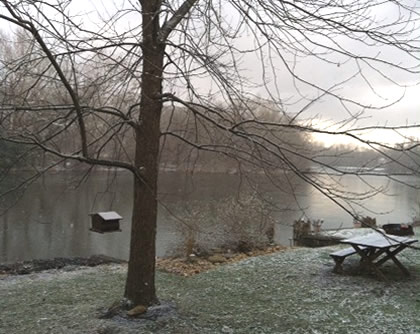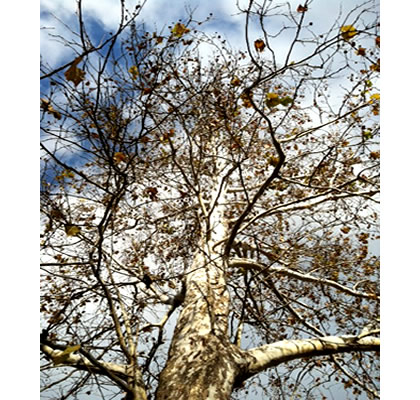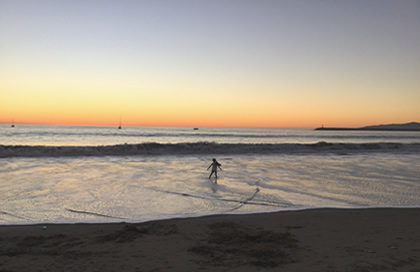
I don’t know what I expected when I went to “Ted Talks” on the web to listen to Brene Brown talk about vulnerability. All I know is my friend told me, “you have to watch this.”
The thirty minute talk set off a flurry of reflections for me. But what has stayed with me, returning again and again in my thoughts, came in the final moments when she spoke of how to practice “whole-hearted vulnerability:” love with our whole hearts; practice joy and gratitude; believe we are enough. It was the last element that has been the biggest stumbling block for me, and for so many other women I know.
Friday was a journey. We rose at 5:15 am. I said good-bye to each of my dear kitties, and then we drove to Baltimore to board a five plus hour flight to Los Angeles and arrive in what seemed like chaos in the Los Angeles airport. Our reward was seeing our daughter and family and being with our oldest grandson to celebrate his college graduation. But the preparation for leaving during the previous five days had left me feeling as if I had gone beyond “enough.” I had been trying to take care of things in all areas of my life before leaving town, as if all had to be in order so I could go. I was not conscious of my thinking until I looked back. When I did, I realized I was operating with the belief that by completing all these tasks, I would have done enough. I would be enough.
I have been in the “doing enough to be enough” place many times. We live in a culture that reinforces this belief constantly. After all, our economy is about production and consumption and progress; we receive these messages all the time, in media, from other people, from our teachers. It is as if we are enculturated into the belief that there is always more to do, to accomplish, to buy, and to be. If we come to a place where we accept ourselves as we are and believe what we do is enough, we usually notice we are swimming against the current.
But we pay a price for trying to be enough by doing more. When I feel that way, my heart, not to mention my mind, feels depleted, and I have little emotional energy or ability to be present or patient. Doing too much in order to feel I am enough robs me of what is most important, my connection to those dear to me and to myself.
The ability to observe our reactions and behavior is called svadhyaya in Sanskrit. This is one of the three elements of kriya yoga, the yoga of action, as described by Patanjali in Yoga Sutra 2.1. Svadhyaya offers us the possibility of seeing how we create suffering in our own lives, things like believing we are not enough. This sutra tells us to develop a practice to deal with behaviors or attitudes causing problems. The practice, called tapas, requires effort and continued self-observation to make sure it is reducing the negative effects. The last element of kriya yoga is isvara pranidhana, requiring an acknowledgement that there is a power greater than ourselves to whom we must turn over the results of our actions.
Our tapas could be a mantra we include in a meditation each day. One student in my Wise Women class told of a therapist who had given her a mantra that could be used: “I am enough. I do enough. What I do, I do well.” The svadhyaya becomes our continued self-observation. Since our old way of thinking has become a habit, at some point we face resistance. The old pattern will be pushing us to do more so we can feel we are enough, yet our practice will be linking us to a new message, one that assures us we are enough as we are. Inevitably this resistance creates heat, the heat of tapas, as we move to create the new positive pattern, and so effort over time is required to transform the old pattern. To maintain the effort required we need humility and faith that something positive will come to fruition, over time, through our efforts – isvara pranidhana.
There is a price we pay for staying in our old patterns, which is continued suffering. And, there is a price we pay when we engage in making change, which is effort. But there is a pay off eventually as we begin to move from “not enough”‘ to a place of believing we are enough. When we live in the place of believing we are enough, we are kinder and gentler to ourselves and others. We feel connection in our relationships, and we are able to touch joy and peace within ourselves. The universe is full, the Veda-s tell us. And indeed it is when all is enough.
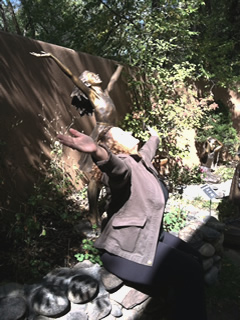 Yoga identifies five dimensions in our human system: the physical or annamaya, the energetic or pranamaya, the intellect or manomaya, the personality or vijnanamaya, and the emotional or anandamaya. The word ananda, in the emotional dimension, is translated as “joy that never stops.” This level of our system is capable of joy because it is not linked to habitual ways of thinking that cause suffering.
Yoga identifies five dimensions in our human system: the physical or annamaya, the energetic or pranamaya, the intellect or manomaya, the personality or vijnanamaya, and the emotional or anandamaya. The word ananda, in the emotional dimension, is translated as “joy that never stops.” This level of our system is capable of joy because it is not linked to habitual ways of thinking that cause suffering. 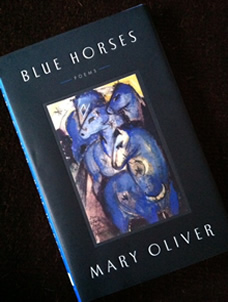 This question has lingered in my mind since it was asked on a form I was filling out for my first reflexology session with my friend and reflexologist Lori Sweet. The question stopped me. I had no idea how to answer it. And, I began to ask myself “what is joy for me?”
This question has lingered in my mind since it was asked on a form I was filling out for my first reflexology session with my friend and reflexologist Lori Sweet. The question stopped me. I had no idea how to answer it. And, I began to ask myself “what is joy for me?”

